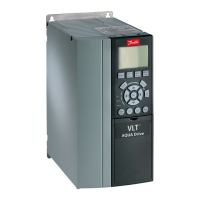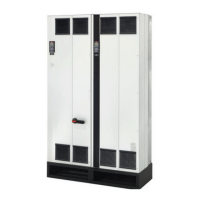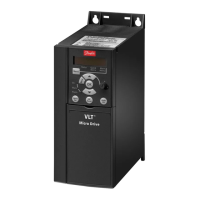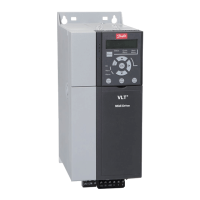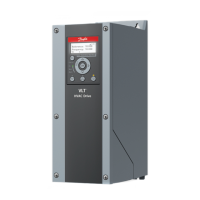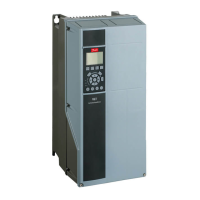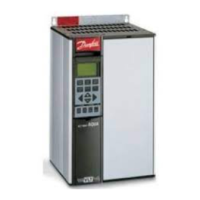•
Although the adjustable frequency drive can
operate at temperatures down to -10 °C (14 °F),
proper operation at rated load is only guaranteed
at 0 °C (32 °F) or higher.
•
Do not exceed the maximum temperature limit.
•
The lifetime of electronic components decreases
by 50% for every 10 °C (18 °F) when operated
above the design temperature.
•
Even devices with IP54, IP55, or IP66 protection
ratings must adhere to the specied ambient
temperature ranges.
•
Additional air conditioning of the cabinet or
installation site may be required.
3.1.3
Cooling
Adjustable frequency drives dissipate power in the form of
heat. The following recommendations are necessary for
eective cooling of the units.
•
Maximum air temperature to enter enclosure
must never exceed 40 °C (104 °F).
•
Day/night average temperature must not exceed
35 °C (95 °F).
•
Mount the unit to allow for free cooling airow
through the cooling ns. See
chapter 3.6.1 Clearance for correct mounting
clearances.
•
Provide minimum front and rear clearance
requirements for cooling airow. See the
instruction manual for proper installation
requirements.
3.1.3.1
Fans
The adjustable frequency drive has built-in fans to ensure
optimum cooling. The main fan forces the air ow along
the cooling ns on the heatsink, ensuring a cooling of the
internal air. Some power sizes have a small secondary fan
close to the control card ensuring that the internal air is
circulated to avoid hot spots.
The main fan is controlled by the internal temperature in
the adjustable frequency drive and the speed gradually
increases along with temperature, reducing noise and
energy consumption when the need is low, and ensuring
maximum cooling when the need is there. The fan control
can be adapted via 14-52 Fan Control to accommodate any
application, also to protect against negative eects of
cooling in cold climates. In case of overtemperature inside
the adjustable frequency drive, it derates the switching
frequency and pattern. See chapter 5.1 Derating for more
info.
3.1.3.2
Calculation of Airow Required for
Cooling the Adjustable Frequency
Drive
The airow required to cool an adjustable frequency drive,
or multiple adjustable frequency drives in one enclosure,
can be calculated as follows:
1. Determine the power loss at maximum output for
all adjustable frequency drives from data tables in
chapter 7 Specications.
2. Add power loss values of all adjustable frequency
drives that can operate at same time. The
resultant sum is the heat Q to be transferred.
Multiply the result with the factor f, read from
Table 3.1. For example, f = 3.1 m
3
x K/Wh at sea
level.
3. Determine the highest temperature of the air
entering the enclosure. Subtract this temperature
from the required temperature inside the
enclosure, for example 45 °C (113 °F).
4. Divide the total from step 2 by the total from
step 3.
The calculation is expressed by the formula:
V =
f xQ
Ti − TA
where
V = airow in m
3
/h
f = factor in m
3
x K/Wh
Q = heat to be transferred in W
T
i
= temperature inside the enclosure in °C
T
A
= ambient temperature in °C
f = cp x ρ (specic heat of air x density of air)
NOTICE!
Specic heat of air (cp) and density of air (ρ) are not
constants, but depend on temperature, humidity, and
atmospheric pressure. Therefore, they depend on the
altitude above sea level.
System Integration Design Guide
MG20N622 Danfoss A/S © 09/2014 All rights reserved. 39
3 3
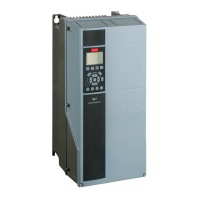
